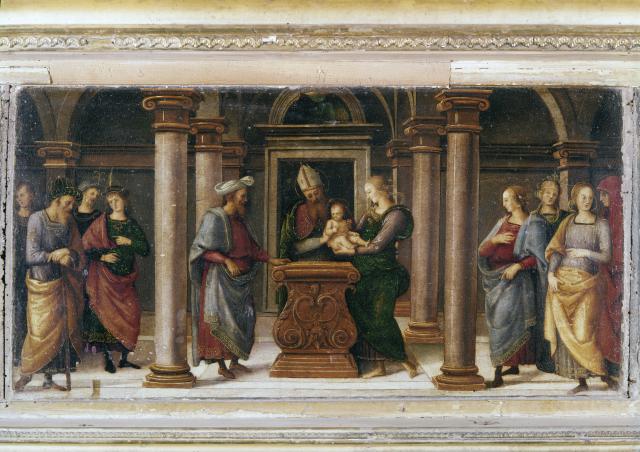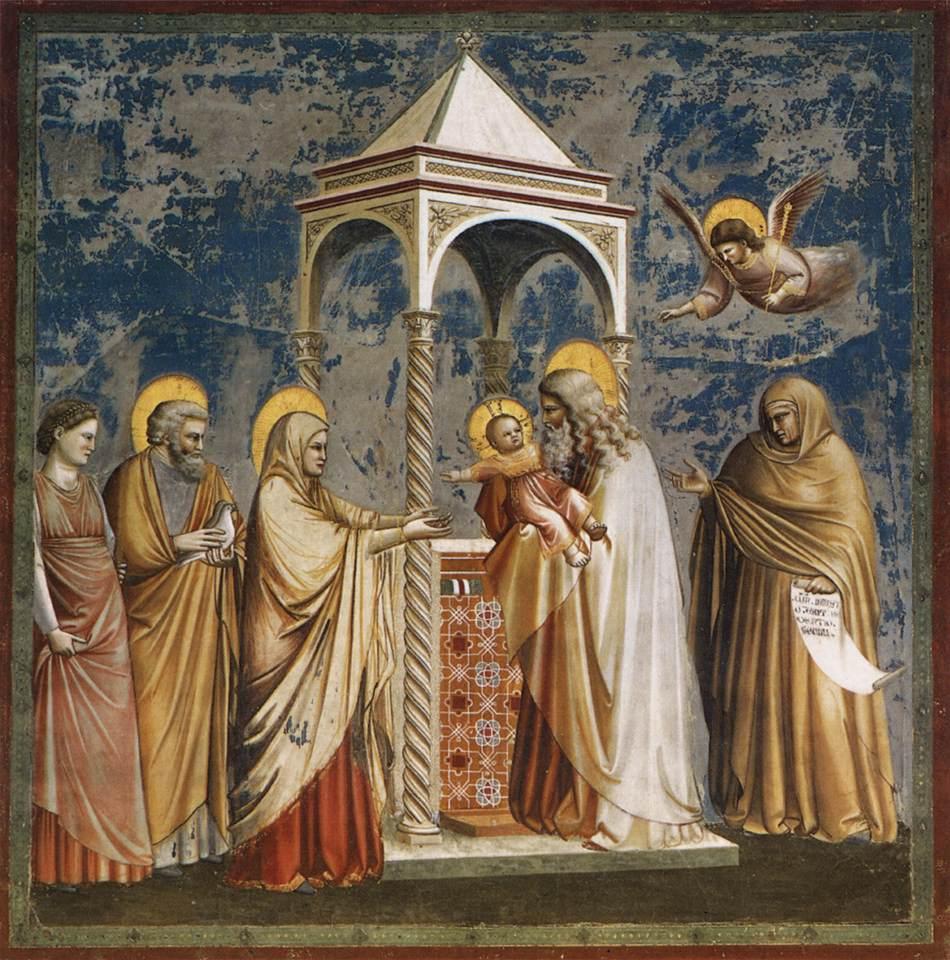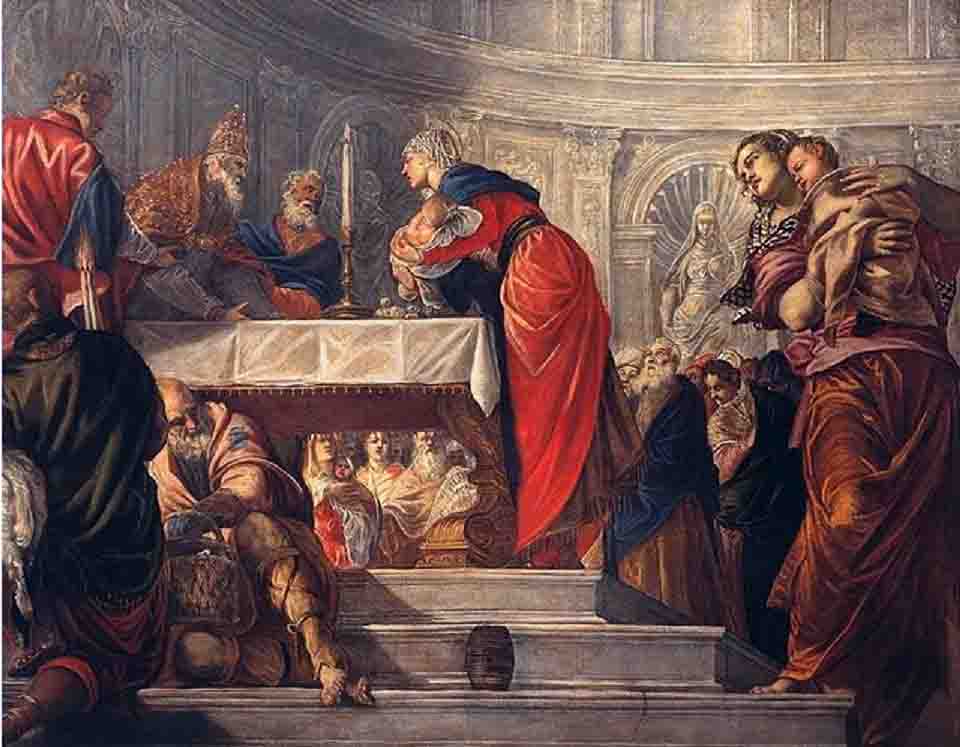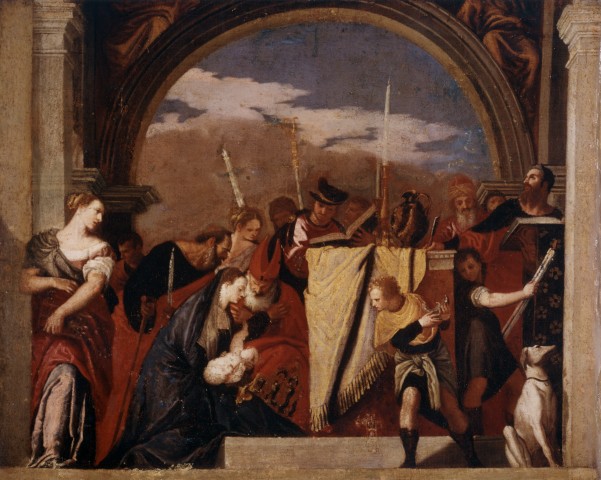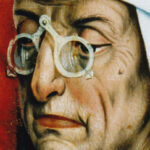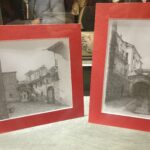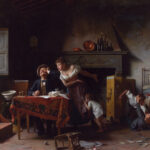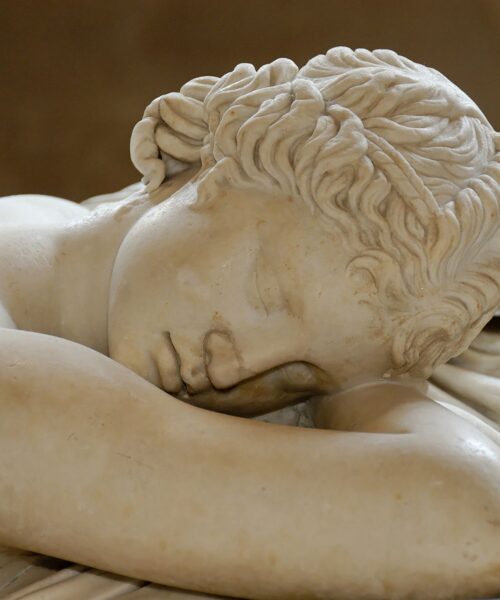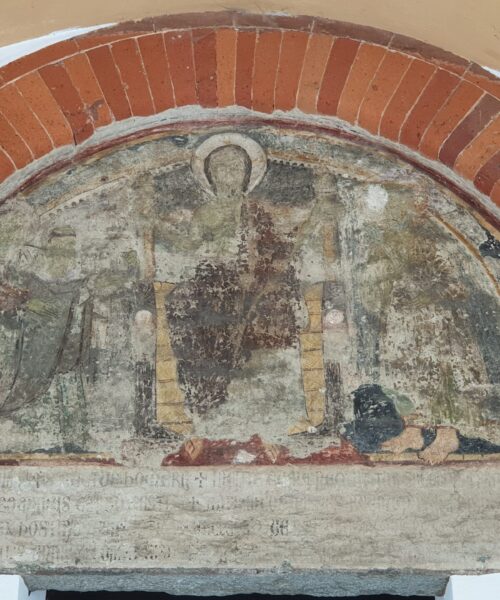On February 2nd, the day celebrating the Presentation of the Lord at the Temple, also known as Candlemas, unveils itself as a rite steeped in symbolism and tradition. This festivity, deeply rooted in Christian history, has inspired numerous artists, making it the subject of some of their most poignant works. The occasion, formerly known as the “Purification of the Blessed Virgin Mary” before the liturgical changes of the Second Vatican Council, is inseparably linked to the postpartum purification rite, as dictated by Mosaic law.
In this context, the law of Moses required that, following the birth of a child, the woman remained in a state of “ritual impurity” for a period varying according to the child’s sex: 40 days for a male, 66 for a female. A practice that, observed today, raises several questions about its origin and the disparity in treatment between the sexes.
Giotto’s “Presentation of Jesus at the Temple” depicts this biblical event with particular intensity, as narrated in the Gospel according to Luke. For firstborn males, the law also prescribed the rite of redemption through a sacrifice, symbolizing consecration to God. Mary and Joseph, following this tradition, brought Jesus to the temple 40 days after his birth, offering the prescribed sacrifice.
In art, the depiction of this biblical moment has been masterfully interpreted by some of the greatest artists of the Renaissance and Baroque periods. Here are four emblematic examples:
Raphael (previously attributed to Perugino): “Presentation of Jesus at the Temple,” part of the predella dedicated to the story of the Virgin, housed in the Church of Santa Maria Nuova in Fano (Pesaro Urbino). In this work, Raphael captures the essence of the divine and the human in a composition that blends grace and solemnity.
Giotto: “Presentation of Jesus at the Temple” (1303-1305), located in the Scrovegni Chapel in Padua. Giotto’s work is a triumph of expressiveness and visual narrative, a shining example of his ability to represent sanctity through simplicity and emotional depth.
Tintoretto: “The Presentation of Jesus at the Temple” (1554-1556), housed in the Gallerie dell’Accademia in Venice. With Tintoretto, we witness a more dynamic and dramatic interpretation of the event, characteristic of his vigorous and theatrical style.
Veronese: “The Presentation of Jesus at the Temple” (1558-1560), located in the Church of San Sebastiano in Venice. In this canvas, Veronese explores the theme with a rich and luminous palette, typical of his approach that combines technical mastery with a taste for opulence and magnificence.
Each artist, with their unique sensitivity and technique, has brought to life a version of the event that not only celebrates a key moment in Christian history but also offers a window into the society and culture of their time, showing how the sacred and the profane can intertwine inextricably in art.

